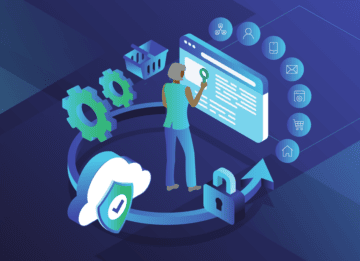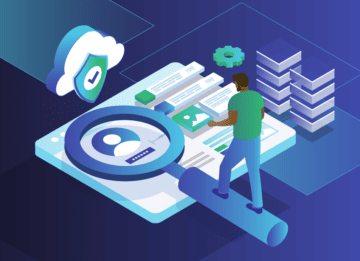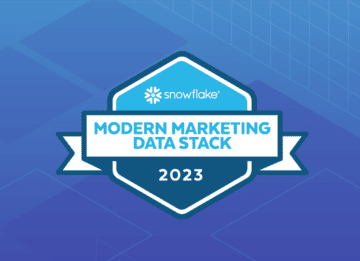Targeting the Enterprise? Think Again.
Lately you can’t turn around without getting hit in the face by another article or blog post talking about how enterprise is the new big thing in tech startups. The articles run the gamut of proclaiming that consumer plays are dead and enterprise is king, to enterprise has already jumped the shark, and even some really good content on how to do enterprise sales from Mark Suster (here, here, and here).
But most of these articles are doing a disservice to startups that are making something other than a consumer focused product because they are completely misusing the term enterprise. The term they should be using is Business-to-Business, or B2B.
What’s the big deal, right? Everyone knows that enterprise and B2B are synonymous.
Not even close! Just because you are selling to businesses doesn’t mean you are enterprise.
What’s the Difference?
Enterprise is just a segment of the B2B world and a segment with very different characteristics of other B2B markets. If you are creating or running a B2B company then you need to know if your segment is enterprise or another B2B segment. It is going to affect every part of your go-to-market strategy.
So let’s take a look at the different B2B segments and some key characteristics. The first step is knowing what segment your business will target. You can attack multiple segments, but you will likely need to build different product/team mixes to do it successfully.
In the US the Small Business Administration breaks down the business segments by number of employees, which you can then associate with annual sales. Here are those segments:
| Small | Medium | Large | Enterprise | |
| # Employees | <250 | 250-500 | 500-1000 | >1000 |
| Avg. Annual Sales | $10 million | $40 million | $158 million | $2.7 billion |
| # of Companies (appx) | 6,000,000 | 50,000 | 27,000 | 11,000 |
I am going to define each segment using three characteristics of your typical sale.
- Sale Size (Annual): How big is the average sale in annual revenue?
- Sale Cycle Length: How long does it take you to close a sale?
- Sale Complexity: How complex is the sale? How many people are involved in the sale?
Obviously there is always going to be some overlap between the segments. There aren’t necessarily hard lines defining each one. The numbers I’m providing are observations based on my experiences selling in the different markets.
For simplicity’s sake let’s pretend that we are looking at these markets through the lens of a tech company with a subscription based product.
| Small | Medium | Large | Enterprise | |
| Sale Size (Annual) | > $1k | > $10k | > $50k; | > $100k |
| Sale Cycle Length | < 1 month | < 3 months | < 12 months | > 12 months |
| Sale Complexity | Low | Medium | High | Clusterf*ck |
Small Business
Sale Size (Annual):
Most deals for Small Businesses are going to be between $1,000 and $10,000 annually. It’s possible to do bigger deals, but those tend to take on the characteristics of a Large Business sale because you are such a large percentage of the customer’s spend.
You will obviously need a higher volume of Small Businesses to build your top line revenue.
Sale Cycle Length:
Most Small Business sales can be closed in less than a month. The sale complexity is low enough and the sale size small enough that your customer can quickly make the decision if they are going to buy.
If your sale cycle gets too long, you are going to run into serious problems because the small size will hamper your growth rate.
Sale Complexity:
Chances are your user, decision maker, and buyer are all the same person. Makes it simple (unless that person sucks). Small Businesses are usually comfortable doing most billing frequencies (monthly/quarterly/annual) and structures (Credit Card or invoice).
Pros:
Can often be done without a traditional sales force (and the traditional sales force expense) through content, SEO, or distribution channels. There is less risk in churn because of the large number of customers you will have.
Cons:
Rapid growth selling to Small Business requires excellent distribution through the web or appropriate channels (marketplaces, partners, etc…). Can be difficult to get immediate effects when you “step on the gas.” If your operating and support costs get too high you can easily eat through your margins.
Summary:
Selling to Small Business is a volume deal with some similarities to consumers. It’s all about having a high enough volume with good enough conversion and churn rates to grow. Lower customer Lifetime Value (LTV) also means your Customer Acquisition Cost (CAC) budget is lower. Lower cost to enter, but also harder to gain initial significant revenue.
Medium Business
Sale Size (Annual):
Medium business are comfortable buying deals of $10,000-$50,000 annually, or $800-$4,200 monthly. The bigger deal the longer the sales cycle and perhaps more complex the sale.
Sale Cycle Length:
The size of your sale for a Medium Business requires a bit more time for the decision to be made. It also may take multiple touches across multiple channels (email, phone call, maybe visit). If your sales cycle gets much over 3 months, you are going to need a higher volume of opportunities to maintain good revenue growth.
Sale Complexity:
Bigger deal means more people involved in the sale. The user of your product is likely not the decision maker. The decision maker might not even be the buyer. This means you are going to have to engage multiple people through the sales process and might even to frame your offering differently based on their needs.
Medium Business still will be comfortable with most billing frequencies, but be prepared to support invoicing in addition to credit card, especially as the size of the sale gets to the upper limits.
Pros:
You can close individual deals that are starting to be real money without needing to build a large sales organization. Having a great product that meets an identifiable need obviously makes these even easier.
Cons:
You are starting to venture into the deep end of the pool. It can be a balancing act to maintain your standard product and pricing to keep your operating costs down as your customers begin to ask for more concessions and customizations because of how much they are paying.
You’ll probably need to get comfortable reading contracts for the higher end of the spectrum.
Summary:
Medium Businesses are kind of like Mama Bear from Goldilocks. Not too little and not too big, maybe even just right. The problem is there can be some big variance in the types of customers you have going from $10,000 a year to $50,000 a year and you can run into difficulties trying to keep your product and go-to-market strategy aligned with the customers.
A lot of times this means saying no to the extremes of the spectrum in order to maximize your efficiency in the middle.
Large Business
Sale Size (Annual):
$50,000 to $100,000 annually. Starting to talk real money here. But that also means we are starting to talk real issues associated with getting that money.
Sale Cycle Length:
Expect these sales to take 3 to 12 months to close. There are going to be starts and stops and you’ll likely be handed off to different people. A key thing is going to be identifying if your sales cycle is closer to 3 months or 12 months. That will have a big impact on how quickly you must fill your funnel. You also may find your sale tied to the budget cycle (see below)
Sale Complexity:
Welcome to the party. Not only do you need to identify a qualified lead (inbound or outbound) but once your foot is in the door you need to identify the customer’s buying process, who makes the decisions at each step of the process (probability is high that it changes), what their legal requirements are, and how their budget process works.
No, the budget process is not the same as the buying process. You don’t necessarily need to get in the discussion for both, but it definitely helps.
This is also the point that security audits and documented processes usually come up. Some of it is very useful, some of it is junk, but you are going to have to do all of it to close the sale.
Oh yeah, also get used to SLAs with penalties…
Pros:
Close nine $100,000 deals and you are doing $1 million annually. Just nine deals, right?
Cons:
Have you ever tried to get $100,000 from someone? It’s takes a special kind of person to be able to get someone to give them $100,000. And those people tend to not be cheap.
Summary:
Some people lump Large Business into Enterprise, and I would probably agree. It really becomes a matter of degrees at this point. You are going to need to put some serious resources into your sales organization and you should expect some serious results in return.
And don’t expect the high touch factor to end after the sale.
Enterprise
Sale Size (Annual):
Welcome to big game hunting. Enterprise deals usually run at least $100,000 per year and often creep up to and above $1 million per year.
Sale Cycle Length:
Start early because you are in it for the long haul. If you can clear all of the gauntlets in less than 12 months than spend all of your money on hiring more sales people because your product is incredible. The more likely scenario is it will take at least 12 months to close the sale and it might be 18 or 24 months. It’s not unusual for employee turnover to have a big impact on Enterprise sales.
Sale Complexity:
If Medium Businesses are algebra and Large Businesses are calculus then Enterprises are Fourth Order Differential Equations. You might have to deal with people in multiple divisions, subsidiaries, and countries. There also will now be a number of “influencers,” people who have a say but aren’t directly involved in the process. And they might have competing priorities.
Do you know your customer’s key financial metrics? If one of the metrics is EBITDA then you probably don’t want to try and sell them on a MRR model.
You’ll also have the legal requirements, security requirements, and SLAs that go with all of that. On-site demos, customizations, integration support, and dedicated customer support are all part of the standard package.
Pray that your enterprise prospects are in fun places to visit because chances are you will log some miles visiting. It might be for a demo, a chance to deepen a relationship with a key contact, or to beg for the deal at the end of the quarter.
Pros:
One elephant can feed the village for a long time and the head looks awesome on the wall.
Cons:
Big game takes a caliber of sales skills that will cost you more than any developer. You also may run into cases where those hunters are less than loyal to your company. They just kill and will kill for the biggest bidder. Your product needs to be industrial strength or you that huge sale will become a huge daily burden of support.
Summary:
Enterprise sales will always involve a level of relationship building far above the other segments. You’ll see a lot of people disagree with that, but I still firmly believe that the enterprise sales person with the relationship will beat the enterprise sales person without the relationship, even if the latter has some advantages in product and price.
There is huge reward and huge risk in enterprise. You need to make sure that you build your product and team appropriately.
The Enterprise is not necessarily the best ship in the B2B fleet
If you read this and realize that you aren’t doing Enterprise sales, or that you definitely don’t want to be doing Enterprise sales, don’t worry about it. It’s all about making sure that you align your product and go-to-market strategy with the B2B market segment that you want to target.
Each segment offers pros and cons. It also isn’t an all-or-nothing game. You can go after multiple segments, but probably not to start out. Pick one. Build your product and team accordingly. Then when you see success figure out what adjustments you will have to make to attack another. This often means creating completely new teams or products, but it also helps by diversifying your revenue streams.
So next time you hear the word “enterprise,” do not automatically translate it to B2B. Figure out what segment it applies to and apply to your own situation accordingly.
Next we’ll discuss what go-to-markets strategies best align with the different B2B segments above.
Recent Blogs
-
 September 21, 2023 Discover How FullContact is Building Trusted Customer Relationships through Snowflake's Native Application Framework Customer 360, Website Recognition, Identity Resolution
September 21, 2023 Discover How FullContact is Building Trusted Customer Relationships through Snowflake's Native Application Framework Customer 360, Website Recognition, Identity Resolution -
 September 20, 2023 Transform Your Customer Experience with FullContact Customer Recognition and Boost Your Conversions Website Recognition, Identity Resolution
September 20, 2023 Transform Your Customer Experience with FullContact Customer Recognition and Boost Your Conversions Website Recognition, Identity Resolution -
 September 14, 2023 FullContact Recognized as a Leader in Snowflake’s Modern Marketing Data Stack Report FullContact News, Partnership
September 14, 2023 FullContact Recognized as a Leader in Snowflake’s Modern Marketing Data Stack Report FullContact News, Partnership